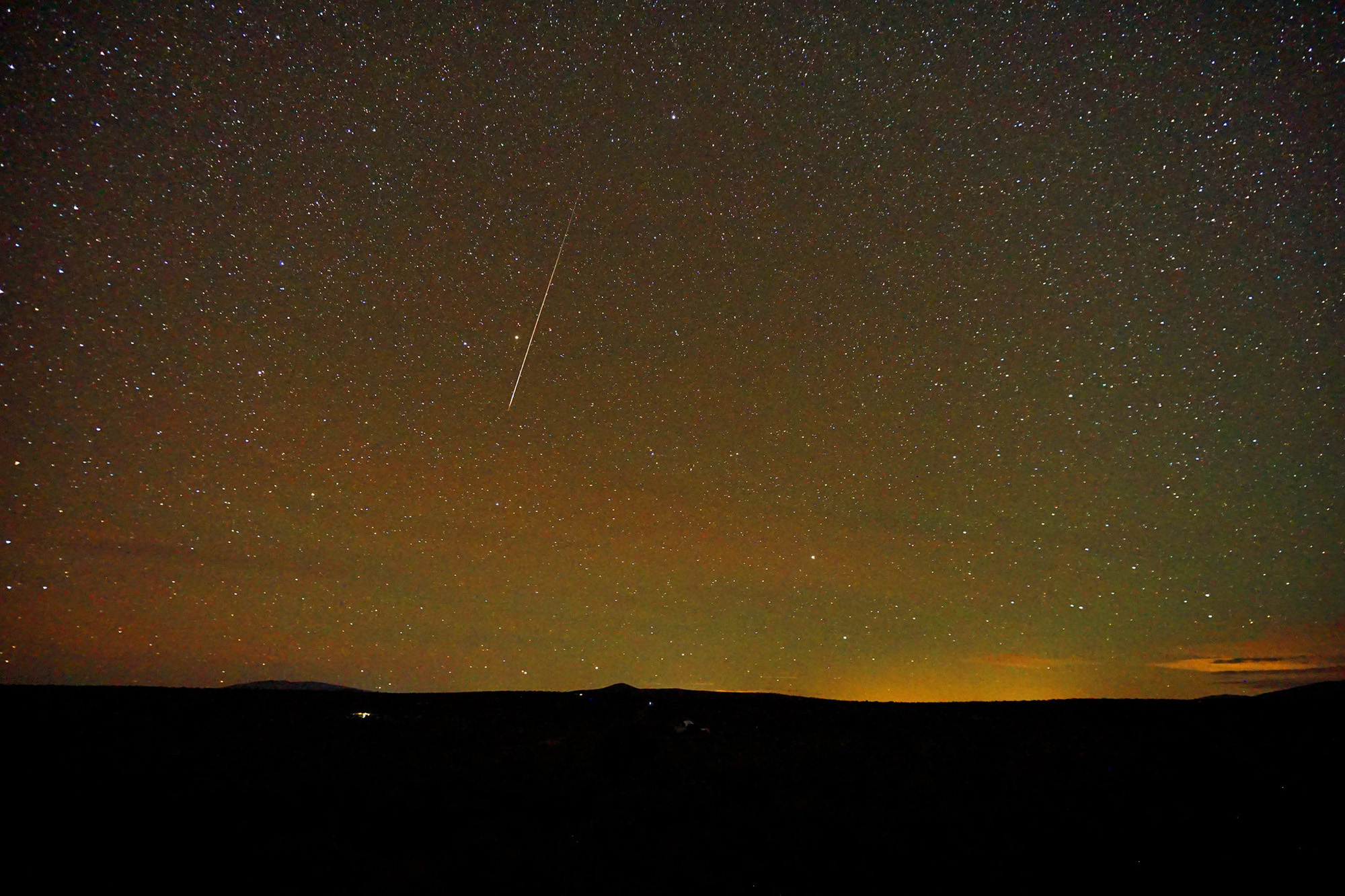Draconid meteor shower peaks tonight! Here's how to see it.
The annual Draconid meteor shower peaks tonight (Oct. 8), just after dusk, and the moon will be dim enough for skywatchers to catch a good view.
The Draconid meteor shower occurs every year in early October, when the Earth passes through a stream of dust from the periodic Comet 21P/Giacobini-Zinner. This year's Draconid meteor shower will be active from Oct. 6 through Oct. 10, but will reach its peak soon after dusk tonight (Oct. 8), offering the best viewing opportunity for skywatchers, according to In-The-Sky.org.
Generally, only a few Draconids are visible per hour. However, this year's meteor shower falls just after the new moon, meaning more meteors may be visible in tonight's sky since the thin waxing crescent moon creates less light interference.
Related: Draconid meteor shower 2021: When, where and how to watch the unpredictable 'shooting star' display
While the Draconids can be seen anywhere in the night sky, they are best viewed from the Northern Hemisphere. That's because the shower's radiant point — or the point in the sky from which the meteors appear to emanate — is near the head of the constellation Draco the Dragon in the northern sky.
The number of possible visible meteors increases the higher the radiant point is above the horizon. Therefore, you'll want to look towards the part of the sky that is slightly higher than the location of the constellation Draco the Dragon.
The radiant reaches its highest point in the sky just before nightfall local time, meaning that the meteor shower will likely produce its best displays soon after dusk, as long as there are clear skies, according to In-The-Sky.org.
Breaking space news, the latest updates on rocket launches, skywatching events and more!
Otherwise, you don't need any special equipment or skills to view a meteor shower — you'll just need to find a viewing spot away from city lights, with little light pollution. Also, you'll want to allow your eyes time to adjust to the dark and avoid looking at devices with a bright screen to ensure you don't miss any of the meteors that may pass overhead.
However, if you miss the Draconids, don't worry — the Orionid meteor shower will peak on Oct. 20, followed by the Southern Taurids and the Northern Taurids in November.
Editor's note: If you snap an amazing photo of a Draconid meteor or any other night-sky sight and you'd like to share it with Space.com for a story or image gallery, send images, comments and location information spacephotos@space.com.
Follow Samantha Mathewson @Sam_Ashley13. Follow us on Twitter @Spacedotcom and on Facebook.

Samantha Mathewson joined Space.com as an intern in the summer of 2016. She received a B.A. in Journalism and Environmental Science at the University of New Haven, in Connecticut. Previously, her work has been published in Nature World News. When not writing or reading about science, Samantha enjoys traveling to new places and taking photos! You can follow her on Twitter @Sam_Ashley13.

